But the most convincing proof of the power of the principle of selection lies in the innumerable multitude of phenomena which cannot be explained in any other way. To this category belong all structures which are only PASSIVELY of advantage to the organism, because none of these can have arisen by the alleged LAMARCKIAN PRINCIPLE. These have been so often discussed that we need do no more than indicate them here. Until quite recently the sympathetic coloration of animals--for instance, the whiteness of Arctic animals--was referred, at least in part, to the DIRECT influence of external factors, but the facts can best be explained by referring them to the processes of selection, for then it is unnecessary to make the gratuitous assumption that many species are sensitive to the stimulus of cold and that others are not. The great majority of Arctic land-animals, mammals and birds, are white, and this proves that they were all able to present the variation which was most useful for them. The sable is brown, but it lives in trees, where the brown colouring protects and conceals it more effectively. The musk-sheep (Ovibos moschatus) is also brown, and contrasts sharply with the ice and snow, but it is protected from beasts of prey by its gregarious habit, and therefore it is of advantage to be visible from as great a distance as possible. That so many species have been able to give rise to white varieties does not depend on a special sensitiveness of the skin to the influence of cold, but to the fact that Mammals and Birds have a general tendency to vary towards white. Even with us, many birds--starlings, blackbirds, swallows, etc.--occasionally produce white individuals, but the white variety does not persist, because it readily falls a victim to the carnivores. This is true of white fawns, foxes, deer, etc. The whiteness, therefore, arises from internal causes, and only persists when it is useful. A great many animals living in a GREEN ENVIRONMENT have become clothed in green, especially insects, caterpillars, and Mantidae, both persecuted and persecutors.
That it is not the direct effect of the environment which calls forth the green colour is shown by the many kinds of caterpillar which rest on leaves and feed on them, but are nevertheless brown. These feed by night and betake themselves through the day to the trunk of the tree, and hide in the furrows of the bark. We cannot, however, conclude from this that they were UNABLE to vary towards green, for there are Arctic animals which are white only in winter and brown in summer (Alpine hare, and the ptarmigan of the Alps), and there are also green leaf-insects which remain green only while they are young and difficult to see on the leaf, but which become brown again in the last stage of larval life, when they have outgrown the leaf.
They then conceal themselves by day, sometimes only among withered leaves on the ground, sometimes in the earth itself. It is interesting that in one genus, Chaerocampa, one species is brown in the last stage of larval life, another becomes brown earlier, and in many species the last stage is not wholly brown, a part remaining green. Whether this is a case of a double adaptation, or whether the green is being gradually crowded out by the brown, the fact remains that the same species, even the same individual, can exhibit both variations. The case is the same with many of the leaf-like Orthoptera, as, for instance, the praying mantis (Mantis religiosa) which we have already mentioned.
But the best proofs are furnished by those often-cited cases in which the insect bears a deceptive resemblance to another object. We now know many such cases, such as the numerous imitations of green or withered leaves, which are brought about in the most diverse ways, sometimes by mere variations in the form of the insect and in its colour, sometimes by an elaborate marking, like that which occurs in the Indian leaf-butterflies, Kallima inachis. In the single butterfly-genus Anaea, in the woods of South America, there are about a hundred species which are all gaily coloured on the upper surface, and on the reverse side exhibit the most delicate imitation of the colouring and pattern of a leaf, generally without any indication of the leaf-ribs, but extremely deceptive nevertheless. Anyone who has seen only one such butterfly may doubt whether many of the insignificant details of the marking can really be of advantage to the insect. Such details are for instance the apparent holes and splits in the apparently dry or half-rotten leaf, which are usually due to the fact that the scales are absent on a circular or oval patch so that the colourless wing-membrane lies bare, and one can look through the spot as through a window. Whether the bird which is seeking or pursuing the butterflies takes these holes for dewdrops, or for the work of a devouring insect, does not affect the question; the mirror-like spot undoubtedly increases the general deceptiveness, for the same thing occurs in many leaf-butterflies, though not in all, and in some cases it is replaced in quite a peculiar manner. In one species of Anaea (A. divina), the resting butterfly looks exactly like a leaf out of the outer edge of which a large semicircular piece has been eaten, possibly by a caterpillar; but if we look more closely it is obvious that there is no part of the wing absent, and that the semicircular piece is of a clear, pale yellow colour, while the rest of the wing is of a strongly contrasted dark brown.
But the deceptive resemblance may be caused in quite a different manner. Ihave often speculated as to what advantage the brilliant white C could give to the otherwise dusky-coloured "Comma butterfly" (Grapta C. album).
Poulton's recent observations ("Proc. Ent. Soc"., London, May 6, 1903.)have shown that this represents the imitation of a crack such as is often seen in dry leaves, and is very conspicuous because the light shines through it.















